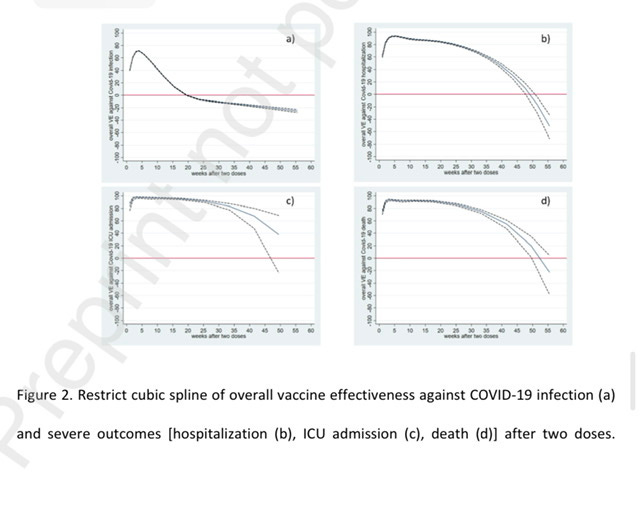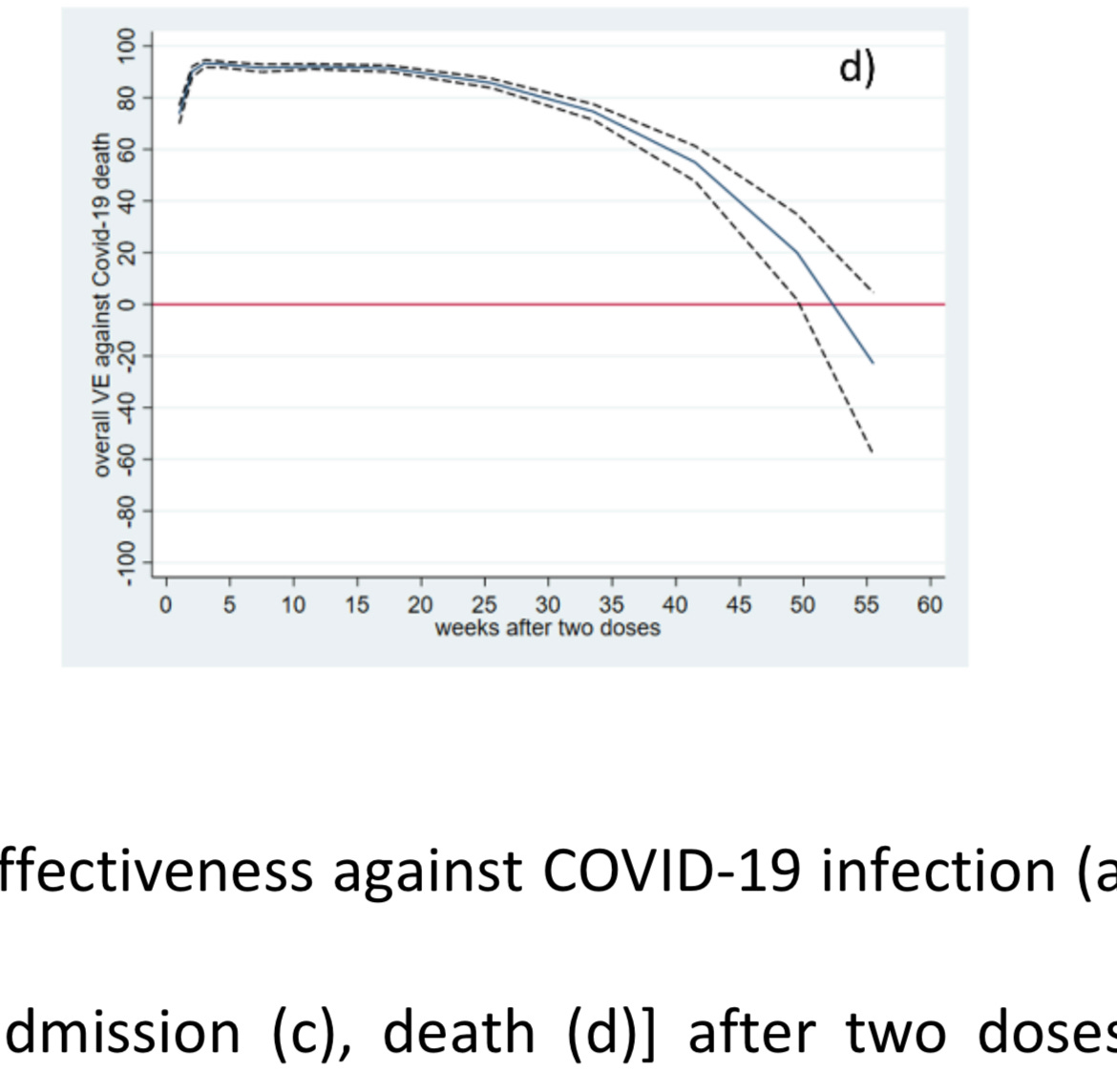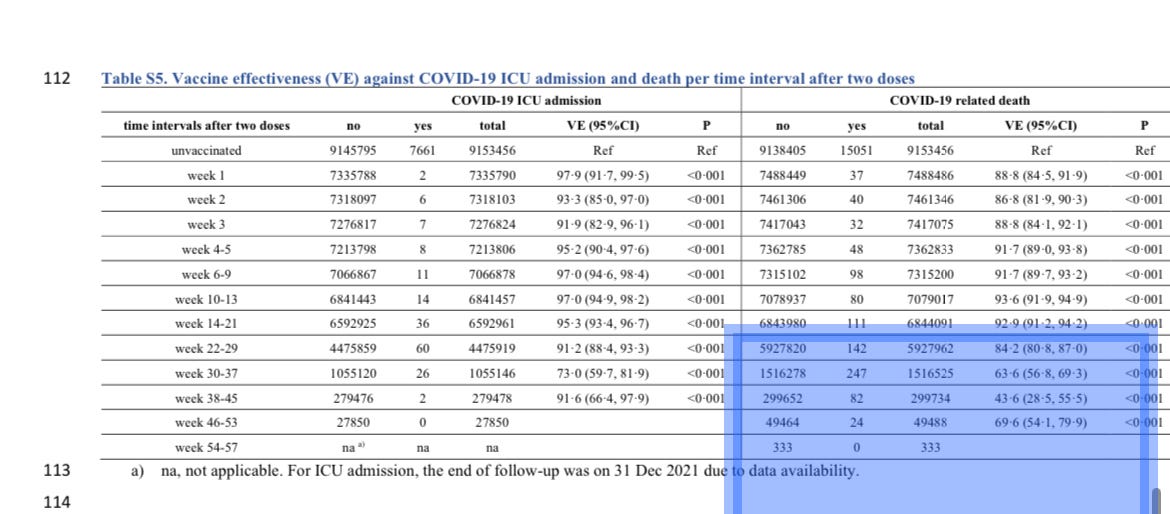A big Swedish study offers fragmentary but suggestive data
On Sep. 20, using data covering 9 million people, Swedish researchers published a paper showing mRNA jabs may increase the risk of Omicron infection after three months.
That finding received attention. But an even more intriguing nugget in the paper has so far gone unnoticed.
Based on one statistical analysis vaccinated people had a HIGHER risk of death or hospitalization from Covid roughly a year after receiving their second dose. The charts — b and d below — show that vaccine protection against death and hospitalization begins to decline slowly after about five months and then plunges about nine months.
(The top chart shows the relative risk of infection, hospitalization, intensive care, and death by week after two vaccine doses. The red line marks zero effectiveness; when the blue line falls below it, it is suggesting vaccinated people are at higher risk of infection.)

(This is the same chart, but only including the risk of death)

This data provides real-world evidence of possible vaccine-caused “antibody dependent enhancement.” In ADE, vaccines cause our immune systems to produce antibodies that help a virus or other pathogen to attack us.
Still, the finding should not be viewed as definitive. It is based on relatively few deaths in the later time periods, which is why the confidence intervals (the dashed lines around the blue line) widen hugely after 40 weeks.
When the researchers used a different statistical method known as standard polynomial regression to analyze the data, they found the vaccines remained moderately effective against hospitalizations and death. In fact, protection actually appeared to increase slightly around a year – a trend that is counterintuitive at best.
Dr. Yiyi Xu, the paper’s lead author, did not endorse either method as superior but said via email the researchers need more data to know which finding might be correct.
Both types of analysis “provide more accurate estimates if there is a sufficient number of cases,” she wrote. “There are very few cases of death and a relatively low number of hospitalization cases around week 40 and later, so the estimation is quite uncertain for both analyses.”
So which statistical method is more likely to be accurate? Is the finding that the vaccines actually increase risk real?
Independent experts on statistics disagreed. One suggested the technique showing the negative efficacy – called a cubic spline — actually is likely to be more correct than the other:
With “standard” (aka single polynomial) regression – blue line – you can fit any data, if you give it enough freedom. The price for that, is that the better it fits the data you give it, the worse it will be at explaining new data, and especially so at the edges… Splines, due to the way they are built, avoid this problem and produce more sensical (hence more useful) predictive models.
But another wrote:
I personally happen to believe strongly that these vaccines will have negative efficacy… But as a statistician I feel you simply cannot make that claim with confidence off the back of a spline like this.
In any case, even the standard model shows a sharp decrease in the value of a two-dose regimen over time. It falls below 45 percent protection from death around nine months before making its odd turn up.

Source – https://alexberenson.substack.com/p/the-first-real-evidence-mrna-shots
